Wasps and bees can quickly turn outdoor spaces into high-risk zones. In South Texas, warm weather encourages nesting activity throughout much of the year, with colonies forming under eaves, decks, and inside wall voids. While most bees sting only when threatened, wasps are aggressive defenders that can attack repeatedly, posing serious risks for those with allergies. Beyond the threat of stings, large hives and carpenter bee tunnels can cause structural damage, and honey or wax buildup may stain walls or attract secondary pests. At LONESTAR Pest Solutions, we use safe, effective methods to remove or relocate hives, eliminate wasp nests, and ensure your property remains protected—all while minimizing harm to beneficial pollinators.
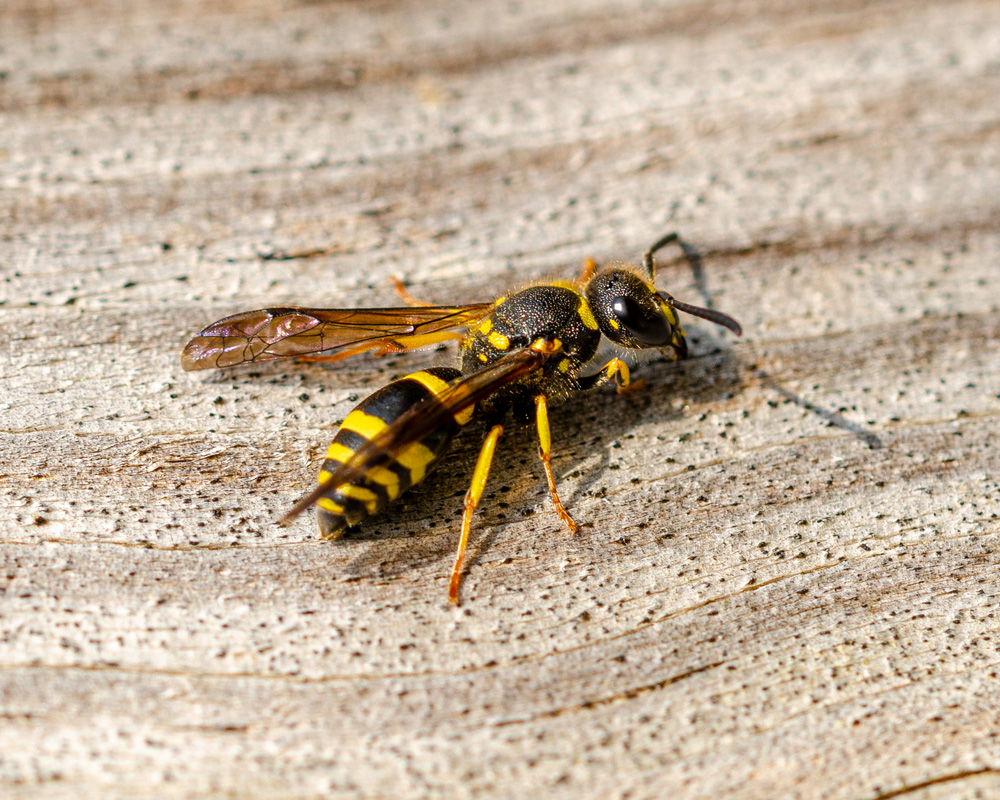
Different bees species require specific solutions. Here are some of the common types of bees we often find in our surroundings.

Slim-bodied and aggressive defenders, wasps build paper nests under eaves, decks, and trees. They sting repeatedly and are most active in warmer months.
Size, Color: ½–1 inch long; slender with black and yellow or reddish markings.
Identifying Characteristics: Narrow “waist,” smooth body, and hanging legs in flight.
Where does it nest/hide? Eaves, trees, decks, porches, and wall voids.
When does it typically reproduce? Spring through summer; colonies die off in winter.
What is it attracted to? Sweet foods, protein sources, and bright colors.
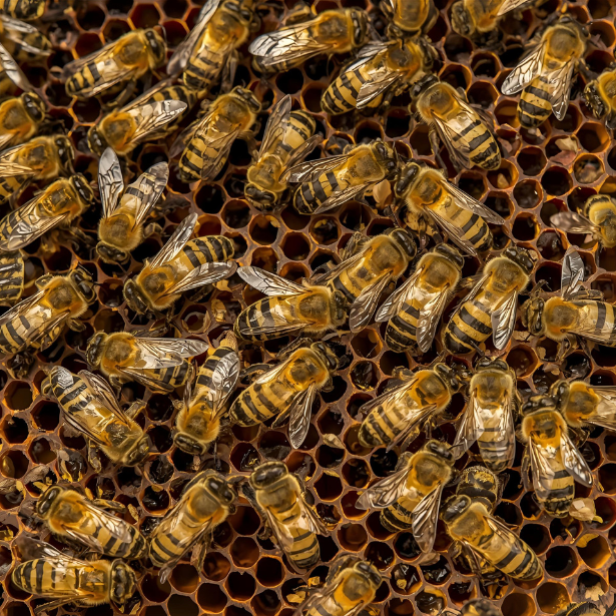
Social bees that build hives with wax; they sting when threatened and can form large colonies in walls, attics, or trees.
Size, Color: About ½ inch long; golden brown with black bands and fuzzy thorax.
Identifying Characteristics: Oval, hairy body with pollen baskets on hind legs.
Where does it nest/hide? Hollow trees, wall cavities, attics, or man-made hives.
When does it typically reproduce? Spring and summer swarming seasons.
What is it attracted to? Flower nectar, sugary drinks, and blooming plants.
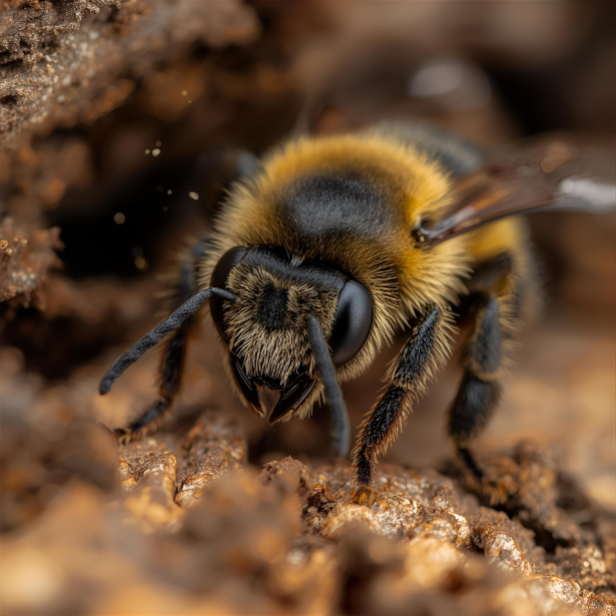
Solitary bees that bore into wood to make nests, potentially causing structural damage over time.
Size, Color: ¾–1 inch long; shiny black abdomen and yellow thorax.
Identifying Characteristics: Resemble bumble bees but have smooth, hairless abdomens.
Where does it nest/hide? Soft, unpainted wood—eaves, beams, decks, and railings.
When does it typically reproduce? Spring and early summer; females reuse tunnels yearly.
What is it attracted to? Bare or weathered wood and flowering plants.
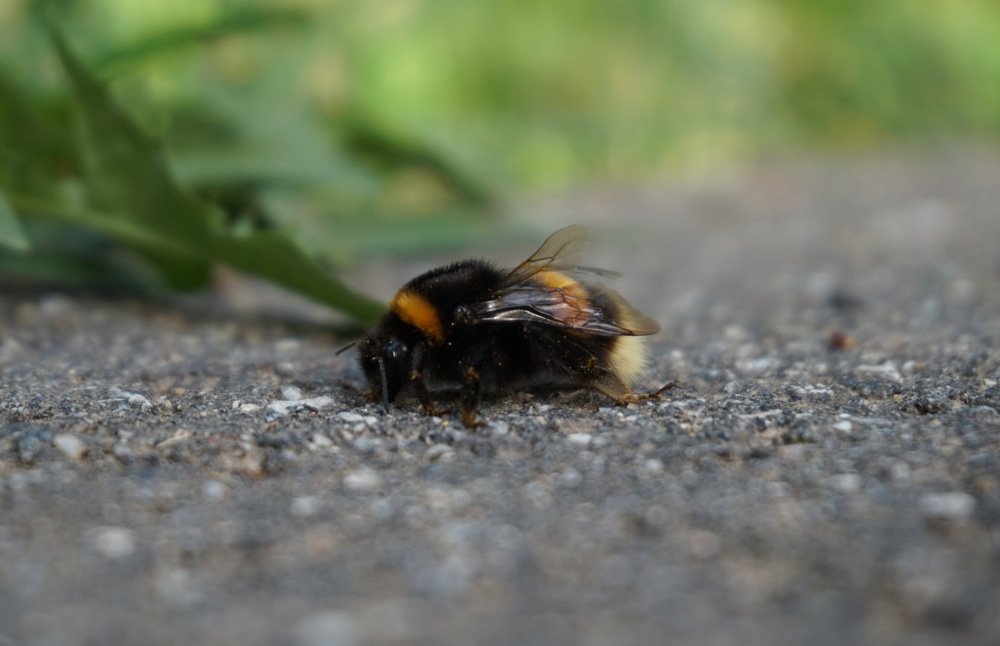
Larger, fuzzy bees that nest in the ground or cavities; generally non-aggressive but will defend the nest.
Size, Color: ¾–1 inch long; black and yellow with dense hair.
Identifying Characteristics: Round, fuzzy body and slow, buzzing flight.
Where does it nest/hide? Abandoned rodent holes, compost piles, or wall voids.
When does it typically reproduce? Spring through late summer; new queens overwinter.
What is it attracted to? Flower nectar and sheltered nesting sites near blooms.
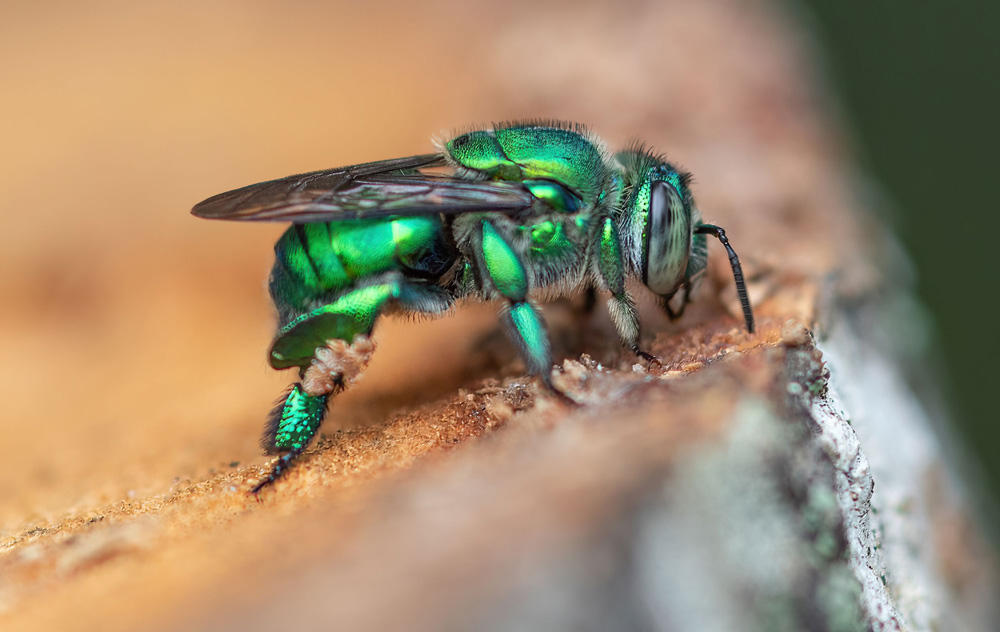
Small, attracted to human sweat; usually non-aggressive but can sting if provoked.
Size, Color: ¼–½ inch long; green, blue, or black metallic sheen.
Identifying Characteristics: Small, slender, often shiny with sparse hair.
Where does it nest/hide? In soil, decayed wood, or cavities near gardens.
When does it typically reproduce? Spring and summer; several generations per season.
What is it attracted to? Human sweat, nectar, and moist soil.
Our bee control service is designed to safely remove or relocate hives while protecting your property and minimizing harm to the bees. By combining careful inspection, targeted treatment or removal, and follow-up support, we ensure your home or business remains safe from bee-related risks.
We thoroughly inspect your property to locate hives, identify the bee species, and assess the size and potential risk of the infestation.
Using safe and effective methods, we remove or relocate bees from the property, addressing both the colony and any honey or comb that could attract pests.
After removal, we monitor the area, provide preventive guidance, and take additional measures if necessary to prevent bees from returning.
Lorem ipsum dolor sit amet, mea ei viderer probatus consequuntur, sonet vocibus lobortis has ad. Eos erant indoctum an, dictas invidunt est ex, et sea consulatu torquatos. Nostro aperiam petentium eu nam, mel debet urbanitas ad, idque complectitur eu quo. An sea autem dolore dolores.
Bee activity slows, but hives are still active as they prepare for winter.
Bees may seek sheltered areas, increasing the likelihood of indoor hives.
Aggressive defensive behavior may occur if hives are disturbed during removal attempts.
Our comprehensive pest inspection and prevention program focuses on early detection and elimination of conditions that attract unwanted pests. Through ongoing monitoring and tailored maintenance, we help ensure a safe, pest-free environment for your facilities year-round.
A proactive rodent management program reduces costly damage, contamination, and emergency callouts often associated with reactive treatments. By addressing potential issues early, LONESTAR Pest Solutions helps protect both your facilities and your budget through consistent, preventive care.
Our hassle-free scheduling and routine visits allow your team to stay focused on daily operations while we handle pest prevention behind the scenes. With reliable service you can count on, LONESTAR Pest Solutions ensures your facilities remain protected—without interruption or added effort on your part.
From effective elimination to long-term prevention, we provide more than just products — we provide peace of mind. Our professional-grade solutions are designed to target pests quickly and efficiently, while our certified experts are here to guide you every step of the way. With personalized guidance and the assurance of high-quality standards, you’ll have the confidence to take back control of your environment.
Great customer service with Team Theresa at the front desk & Cameron, my technician. They are a joy to work with. Theresa consistently like clock work schedules my appointments quarterly & timely. Cameron has done an incredible job going above & beyond maintaining my grandson’s sandbox outside – ant free! It is a such a relief. Never mind his meticulously attention to detail inside my home is much appreciated. Both Theresa & Cameron are a valuable asset to Lone Star Pest. Call them!
— Susie Gold
Lonestar does our quarterly pest control and we had to call for re-spray of our kitchen due to these 100 plus degree temperature days. They sent Eddie over right away and he was so helpful telling me to pick up dog food every day, plug drains daily, use vinegar solution for drains, and make sure they always spray an area of the custom cabinets that has a gap between the cabinets and wall. He was the best! Really educated me and was so patient and even funny as I stared wide eyed over his knowledge of all things cockroaches.
— Carolyn Wafford
Have used Lonestar for years for normal treatments inside and outside, but just recently used them for mosquito control prior to an outdoor graduation pool party. EXCELLENT RESULTS AND PHENOMENAL SERVICE! We had them do a general area fogging and then leave-behind portable remote controlled area “mister” — we haven’t seen a mosquito in two weeks!
— John Seamon
We have used Richard’s team for years. Recently we learned our neighbor’s had termites. We contacted Lone Star to learn about our options. The solution provided was better than solutions our neighbors suggested. In fact, we learned of several pitfalls that our neighbors might encounter (beyond higher cost over the long term).
— Timothy Smith